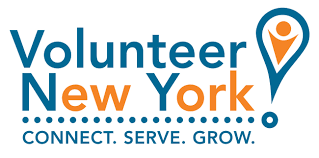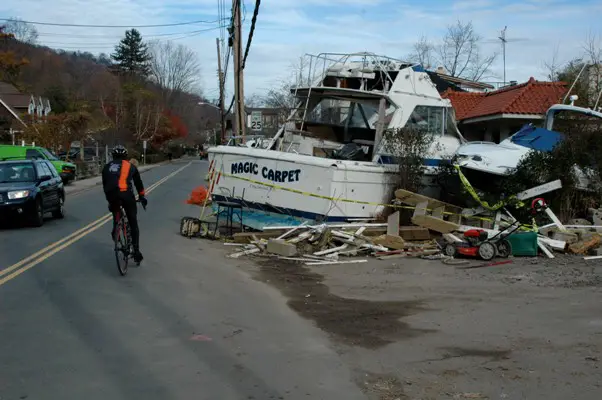Westchester County businesses left in the dark for days or weeks by Hurricane Sandy will be “catching up” this holiday season on lost work hours and billings, a business leader in the county predicted. And three governor-appointed commissions will spend the rest of the year examining how New York can improve its infrastructure and emergency preparedness before another major storm wreaks disaster in the state.
At Bridge Street Properties, a 205,000-square-foot commercial and retail development in the former Lord & Burnham factory complex on the Hudson River in Irvington, “I think that we are one of the only businesses open right now,” said Connie Leonardis, office manager at Sloane Stecker Physical Therapy P.C.
More than three weeks after the surging river stormed over seawalls and left four feet of water in ground-floor offices, retail stores and restaurants in the red brick complex, tenants large and small are still replacing or repairing ruined furnishings, equipment and inventory. Bridge Street companies employ about 750 workers, according to an Irvington village trustee.
A prominent tenant, the 14-employee Eileen Fisher Lab Store at 1 Bridge St. “will not open for at least another month,” said Kerri Devaney, spokeswoman for the women”™s fashion clothing company.
She said a roughly four-foot by four-foot pane of glass on the Irvington storefront “was actually pushed out” in the flood. “It did not break. It floated through the store and landed on a couch.” The pane has been reinstalled in its proper setting.
Devaney said ground-floor operations at 2 Bridge St., where Eileen Fisher has manufacturing and back office operations, will reopen early next year. Some of the building”™s 165 employees are working in mezzanine space and a converted yoga room functions as a fit technical design area. Other displaced employees are working from home and from Eileen Fisher offices and locations in Manhattan and Queens.
Regarding the damage in Irvington, “Eileen is personally sad about it,” Devaney said of the company”™s founder and CEO. “It”™s a store in her backyard, in her hometown.”
The Sloane Stecker Physical Therapy center sustained $180,000 in losses, Leonardis said. All of its cardio exercise equipment was lost. “We just had our walls put back up yesterday,” she said.
“We do not have flood insurance,” Leonardis said. Owner Sloane Stecker has applied to the Federal Emergency Management Agency and U.S. Small Business Administration (SBA) for disaster assistance.
As of Nov. 19, only five Westchester businesses had applied for SBA disaster loans, said SBA spokeswoman Carol Chastang. The SBA also has received 24 applications for home disaster loans from Westchester homeowners. “No loans have been approved in Westchester County at this point,” she said.
The SBA as of Nov. 19 approved 151 disaster loans totaling slightly more than $8.1 million for businesses in the five boroughs, Long Island and Rockland County.
For many other businesses in Westchester, the storm”™s damage to their bottom line was caused by closings due to prolonged power outages, noted Business Council of Westchester President and CEO Marsha Gordon. “There were one to two weeks of lost productivity, which absolutely will affect the bottom line for the fourth quarter of the year,” she said.
For those businesses, “I think the month of December will be a major catch-up time,” she said.
Gordon said this post-storm recovery period is “an important time for all businesses to sit with their insurance agents and comprehensively review policies. This is a time to have your insurance agent be an active member of your team.”
Businesses should review their computer back-up systems and emergency preparedness, including provisions for contacting employees and alternative work arrangements. “This is the time to be forward-thinking,” she said. “I think many businesses learned a hard lesson during this storm. This is a good time to do a check-up for businesses even if they weren”™t affected” by Sandy.
At the state level, Gov. Andrew Cuomo recently announced that three newly created commissions will prepare “a comprehensive blueprint so we can bring our emergency preparedness and response capabilities into the 21st century and ensure our infrastructure is built to survive major weather incidents.” Their preliminary recommendations are due by Jan. 3 next year.
The NYS 2100 Commission is charged with finding ways to improve the resilience and strength of the state”™s infrastructure in the event of natural disasters and other emergencies. Cuomo said the commission”™s review and recommendations will address opportunities to integrate infrastructure planning and development into the state”™s economic development strategies. The commission also will look at reforms in insurance and risk management related to natural disasters and other emergencies.
The governor”™s NYS Respond Commission will examine ways to ensure the state is ready to respond to future weather-related disasters.
The NYS Ready Commission will recommend ways to ensure critical systems and services are prepared for future disasters. The commission will identify vulnerabilities in the state”™s health care, energy, transportation, communications and other systems.


















